| Lima | Ollantaytambo and Inca Rail | Machu Picchu | Cusco |
To get to the Sacred Valley where Machu Picchu and a lot of other Incan sites are, you fly to into Cusco. (Sure, you could drive 20 hours over treacherous mountains, but the flight is barely over an hour.) The city sits above 11,000 feet, so if you want to avoid a 25% chance of being struck by altitude sickness, you should take Diamox starting a couple of days in advance. No, it doesn’t matter at all how good a physical condition you are in. Yes, chewing coca leaves or drinking coca tea can help, but modern medicine has its uses. We immediately left Cusco for the town of Ollantaytambo, 2,000 feet lower but still high enough to result in altitude sickness, I would discover a day later.
We had arranged for a driver in advance. He whizzed past random Incan ruins en route to Ollantaytambo, as if they were nothing more than rock formations on the side of the road. If you’re like me, only Machu Picchu comes to mind when you think “Incans” but they ruled over a vast empire. Every car and train ride we took passed by several former Incan settlements, sometimes with crops still growing on the huge man-made steps.
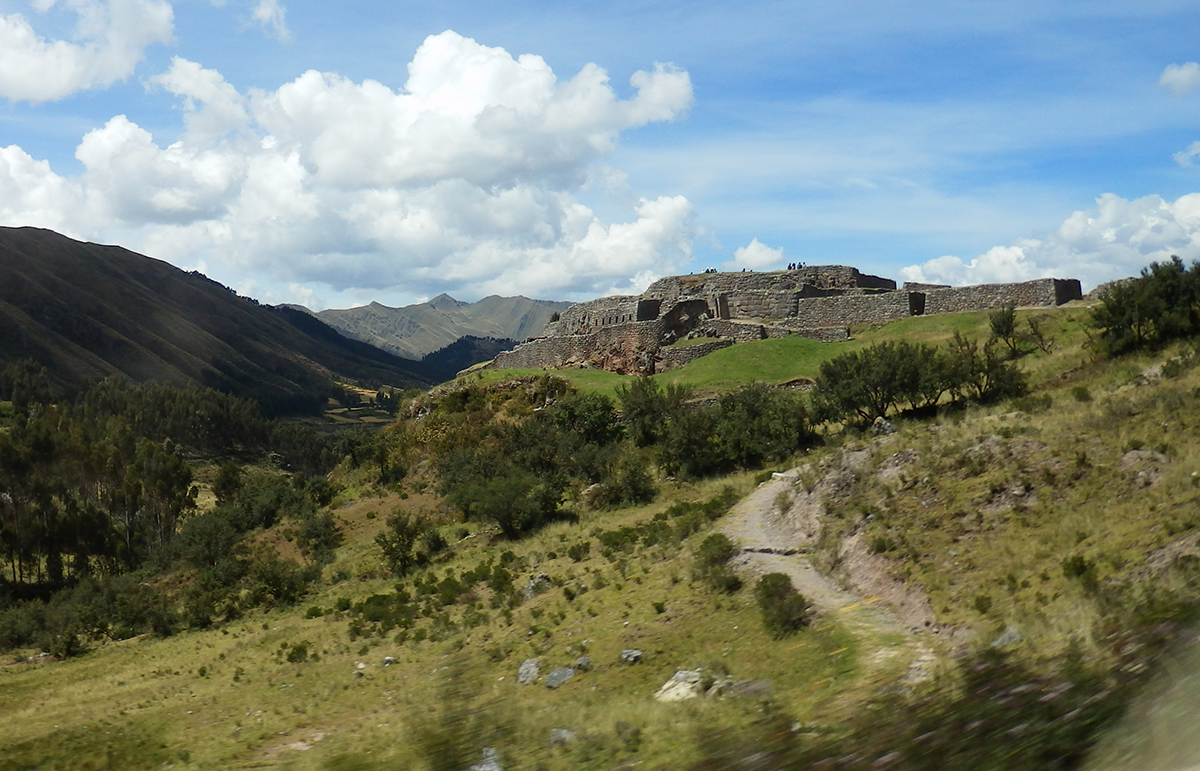
Our driver recommended a stop at a wildlife sanctuary en route, a place that takes injured animals or ones seized from smugglers, and rehabilitates them or simply keeps them for tourists to look at. Monkeys, llamas, a couple of big cats, and a variety of colorful birds were on display.
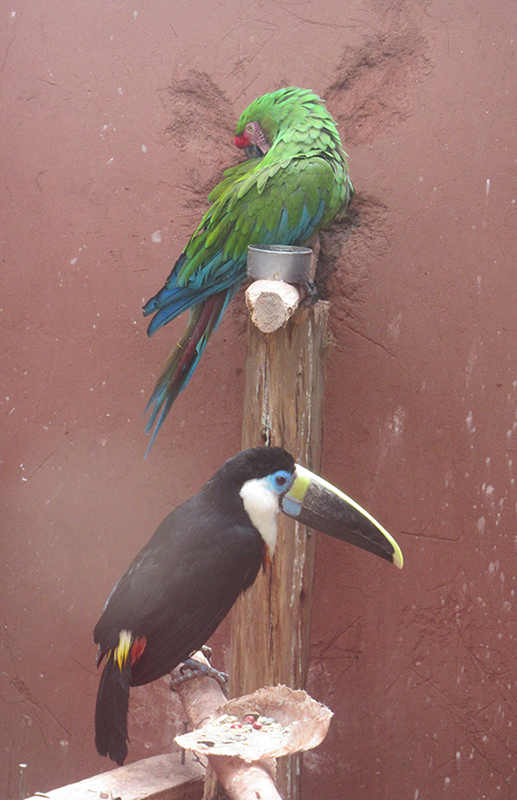
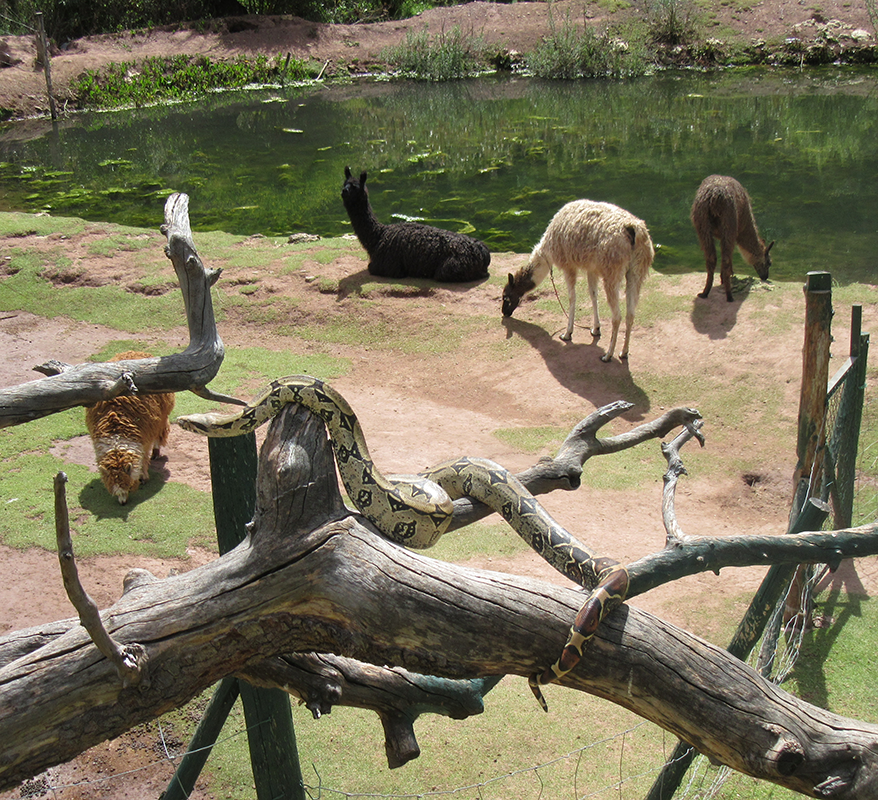
The pride of their collection are a few Andean condors, the largest, and perhaps ugliest, land birds in the Western hemisphere. Though the birds were holy to the Incan people, modern farmers kill them in the mistaken belief that they kill their domestic animals. The Andean variety is not endangered like its California cousin, but the sanctuary is attempting to breed the ones they have.
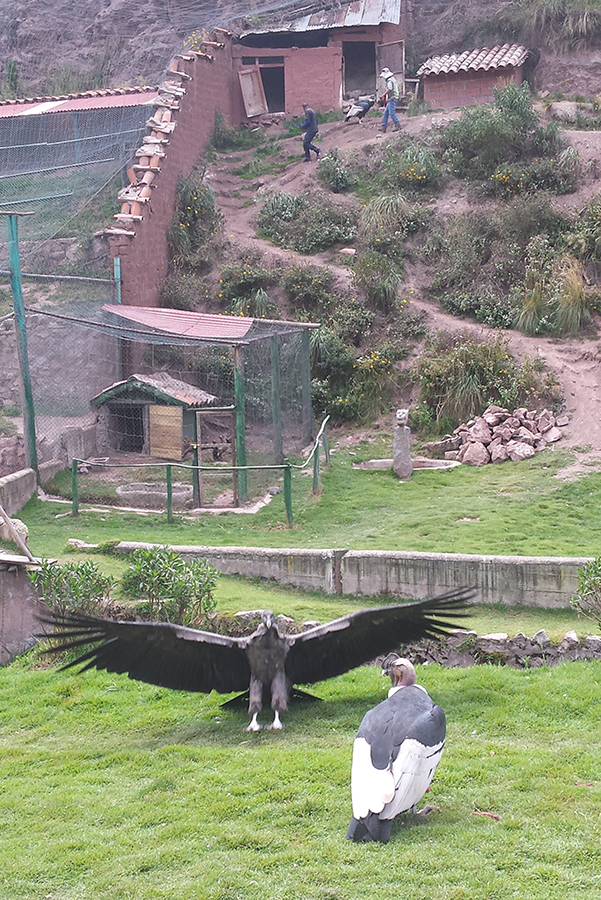
The other animals that impressed me were the local dogs. Mostly hairless, save for a Mohawk running down their head and spine, black-skinned, bat-like ears, the things would look evil were it not for their forlorn eyes – so ugly they’re gorgeous. I didn’t get a great photo of any of them, unfortunately, but I saw some with brown or blonde hair, making them even more punk rock than the black-haired variety.
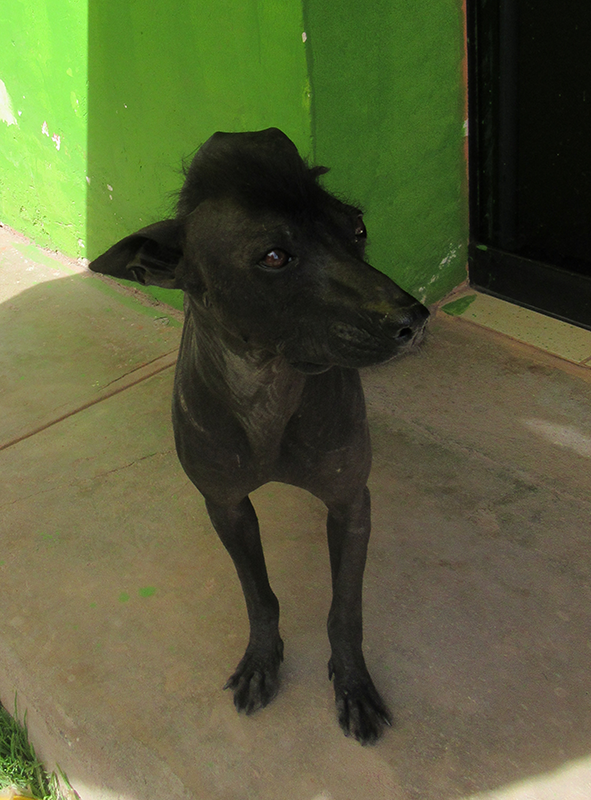
We also stopped at Pisac, a town known for some Incan ruins that also hosts a big outdoor market. We wandered the booths and ended up with a couple of “baby alpaca” scarves for cheap. Later, we’d see the same scarves just about everywhere we bothered to look, sometimes at lower prices. Of course, when we returned to Atlanta, it was 90 degrees, so these and other woolen items we bought immediately went into a bin, in reserve for winter. We had some alpaca burgers for lunch on a balcony overlooking the town square/market (a bit funky/gamey at that particular establishment) before piling back into the van and speeding on. We probably should’ve skipped shopping and lunch in favor of a hike through the ruins, but we’d get to see plenty of ancient wonder soon enough.
Ollantaytambo is a small town overlooking the Urubamba River at the intersection of three canyons. The valleys funnel winds through the town, keeping the place cool. Incan ruins are perched on the neighboring hillsides. The small square, where three-wheeled taxis ferrying locals dodge the vans bringing in tourists, is ringed by cafes, trinket shops, and an absurd number of pizzerias. Incan irrigation systems still run along the edges of the streets throughout the town. Many of the buildings feature pre-Colonial walls. It is essentially a living Incan town, though the former temples now only attract worshipers of history. Compared to the almost-mall-like Machu Picchu del Pueblo, the town that services the more famous ruin, Ollantaytambo is quaint and easygoing. It feels like you’re in Peru.
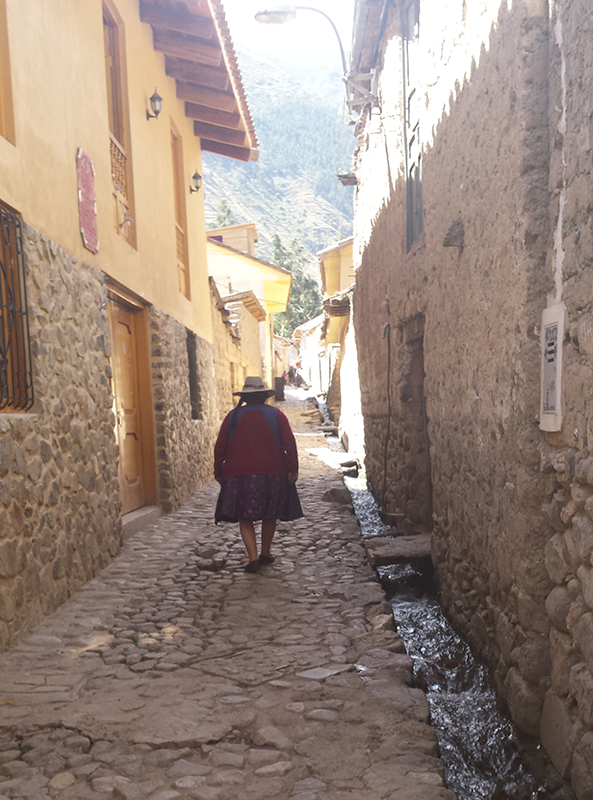
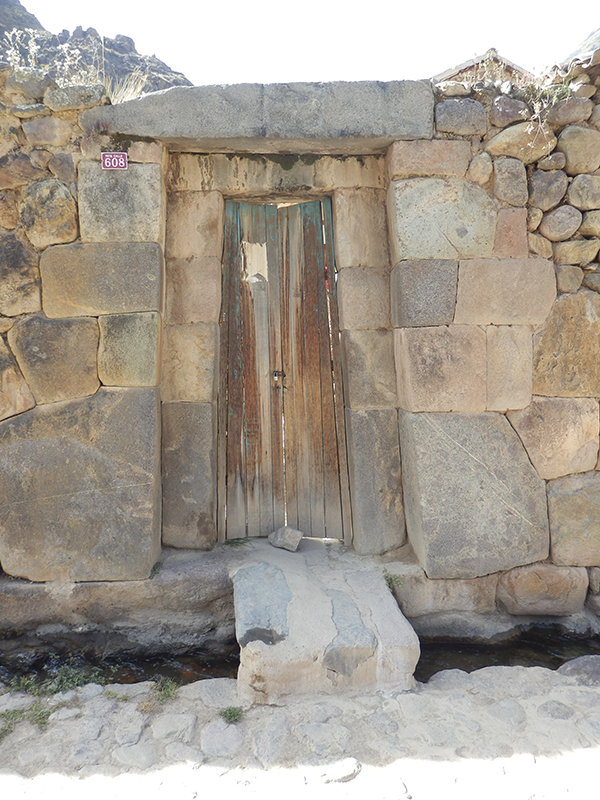
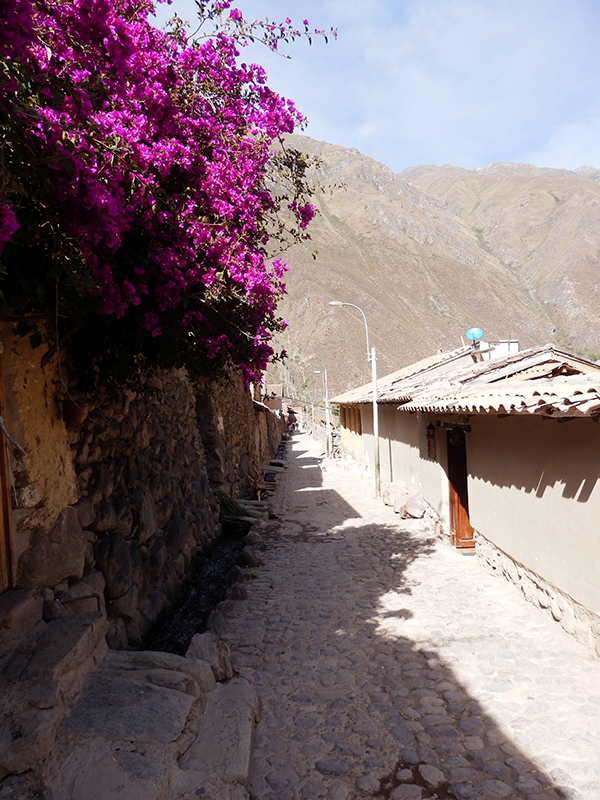
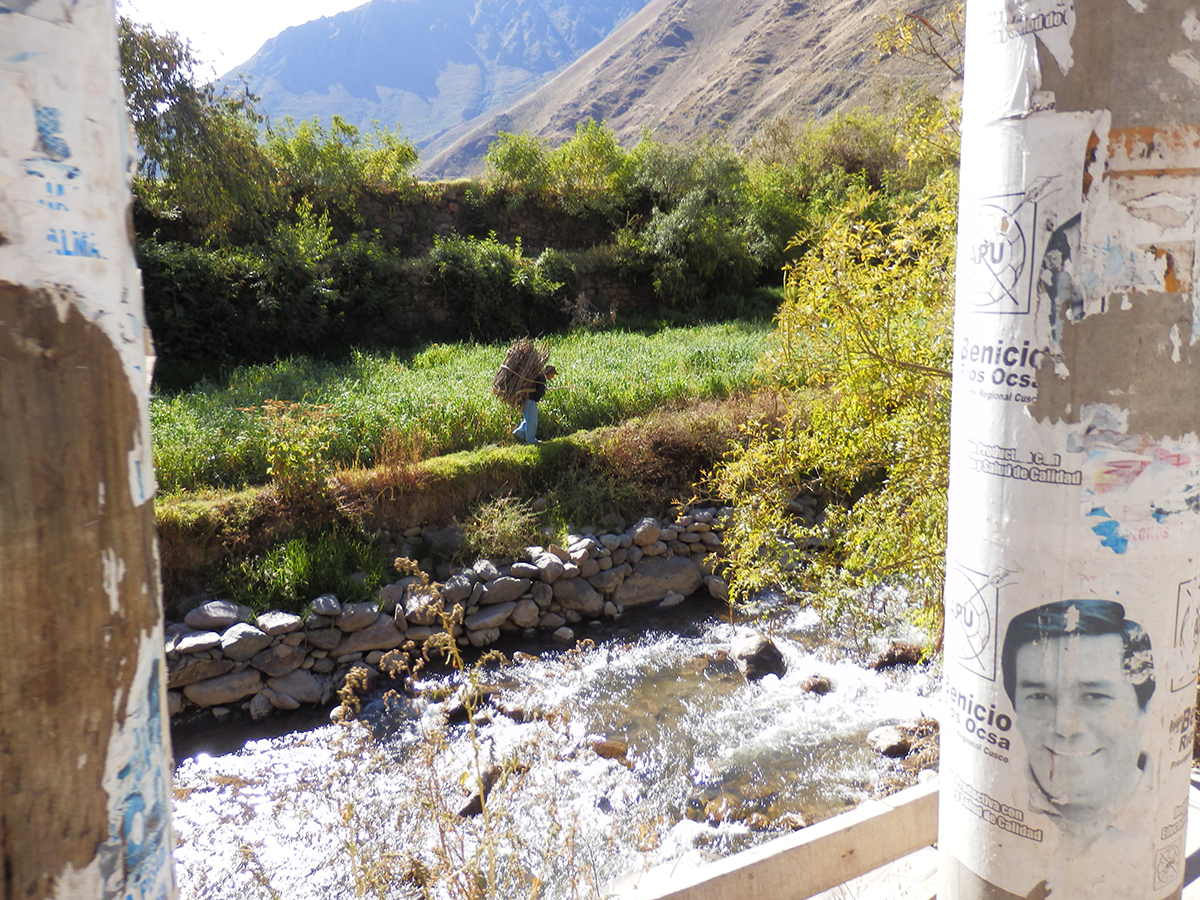
Our hotel, The Apu Lodge, sits at the top of the town. The pretty gardens and second floor rooms offer views of the Incan ruins on the opposite hillside, as well as ruins perched on the cliffs directly above the hotel. Fantastic service, excellent breakfast, clean – my only complaint is that the majority of the roads in town aren’t passable by vehicles so we had to haul our luggage up the hill (on the way out, they hauled our luggage for us using a cart.)
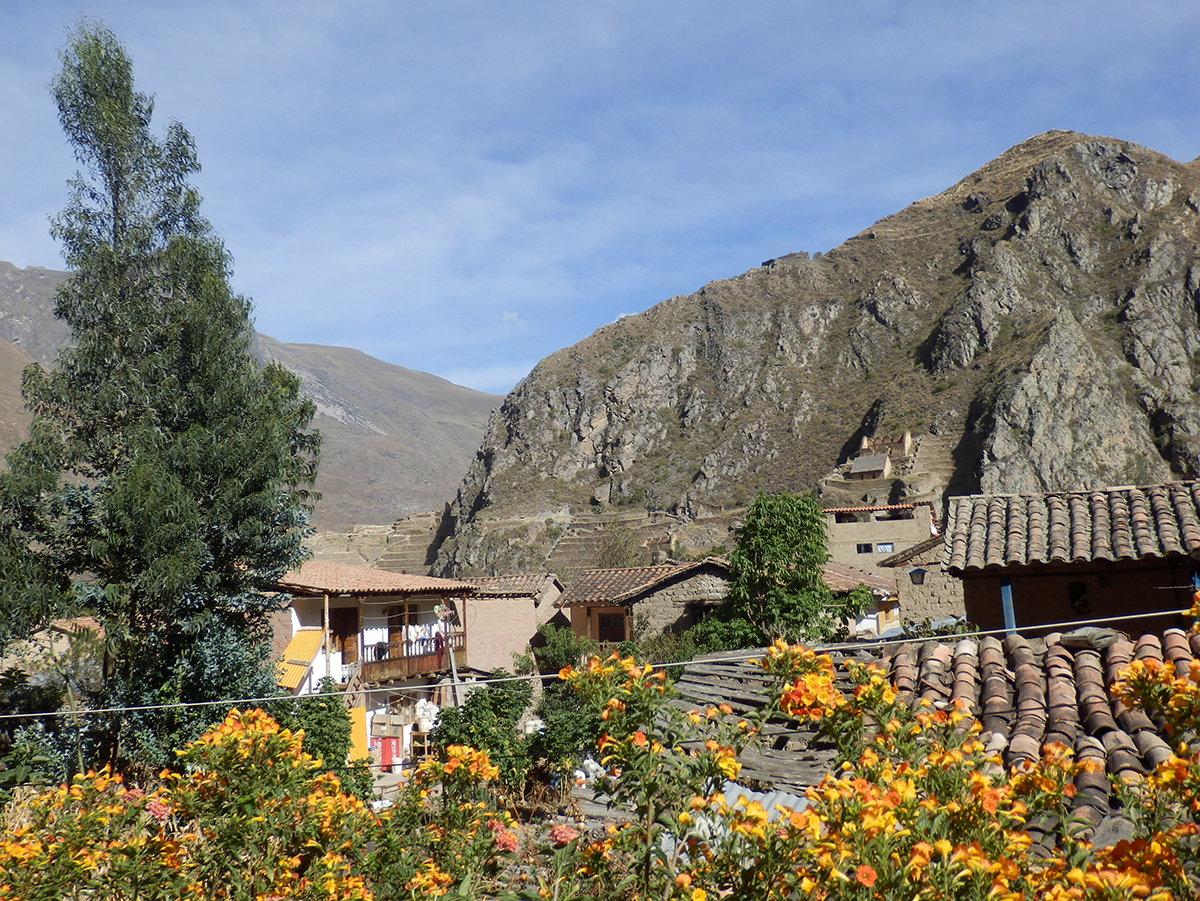
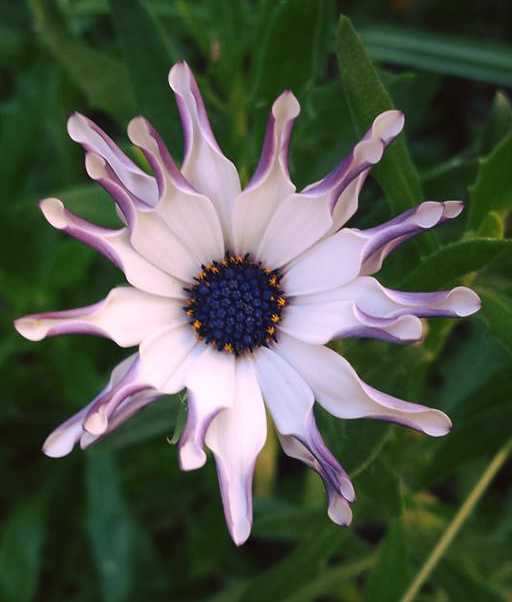
Across a stream from the town proper sits an impressive Incan complex. We wandered around for a while, wondering what the heck we were looking at, before opting to hire one of the many guides hanging around the entrance. The young man was very knowledgeable, having studied history and English in Cusco.
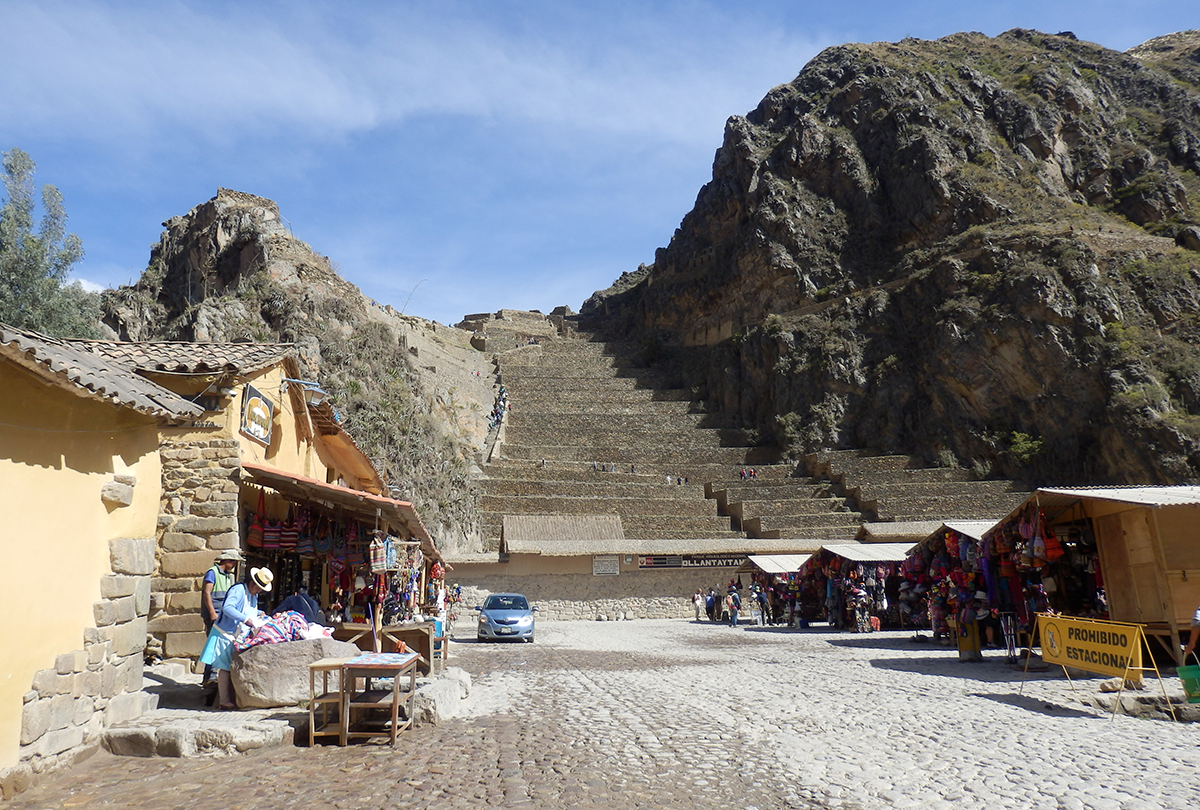
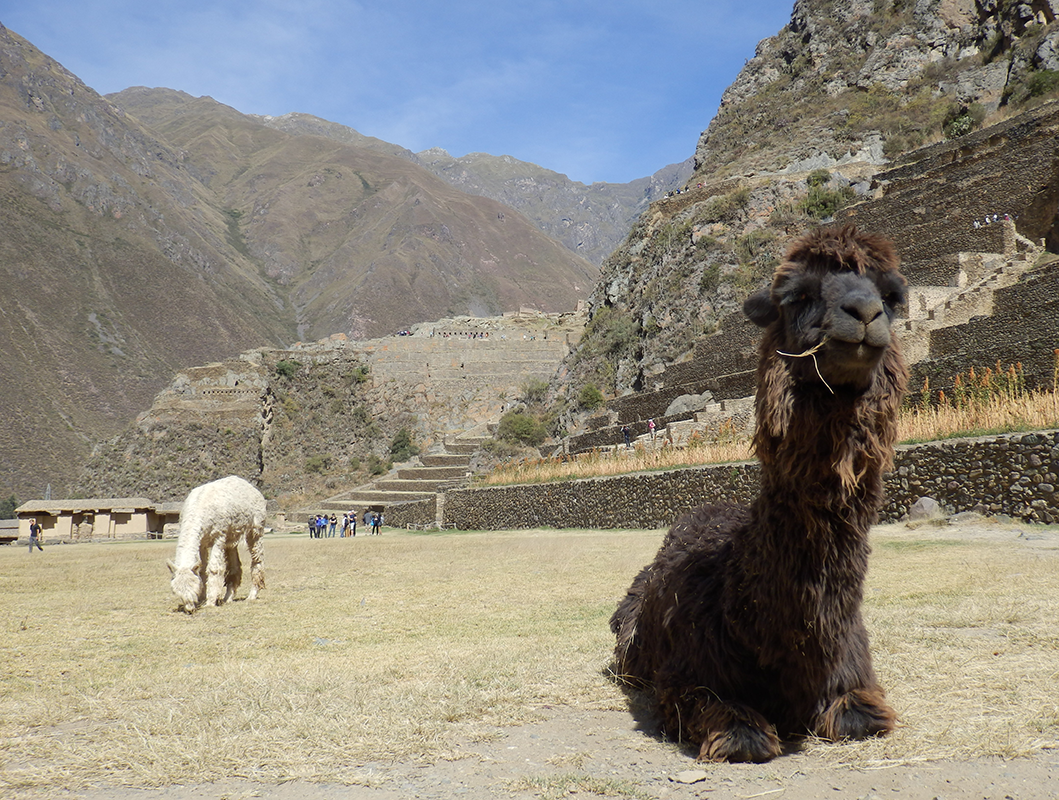
The huge steps served as both retaining walls and extra space for crops. Atop the site, an unfinished temple features some of the last Incan architecture before civil war put a halt to construction, and then the Spanish arrived and destroyed some of the structures. Like a lot of ancient places, the contents of the buildings are long gone, moved to museums and private collections. You don’t get a good feel for what life was like in the ruined, formerly holy quarter. But you can’t help but admire the skill of their stonework.
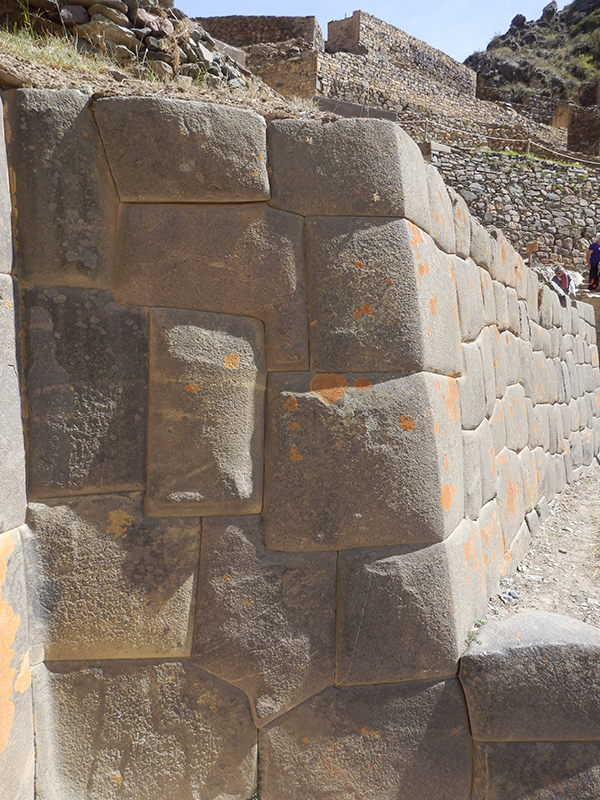
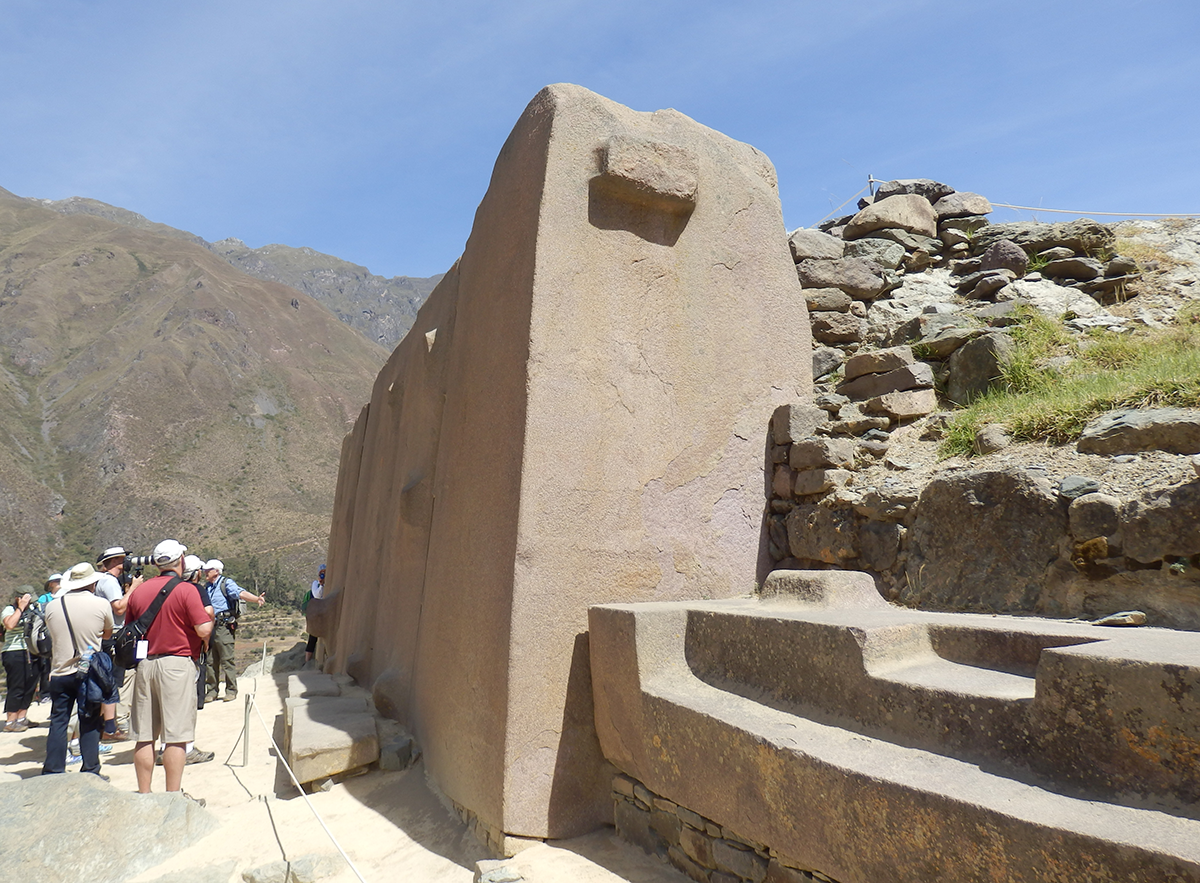
The weird cut-outs here are aren’t for a massive throne, that’s the Leggo-like way the blocks fit together so that they will stay together without mortar. This and the seams that do not extend linearly from stone to stone helped keep the structures together even during earthquakes.
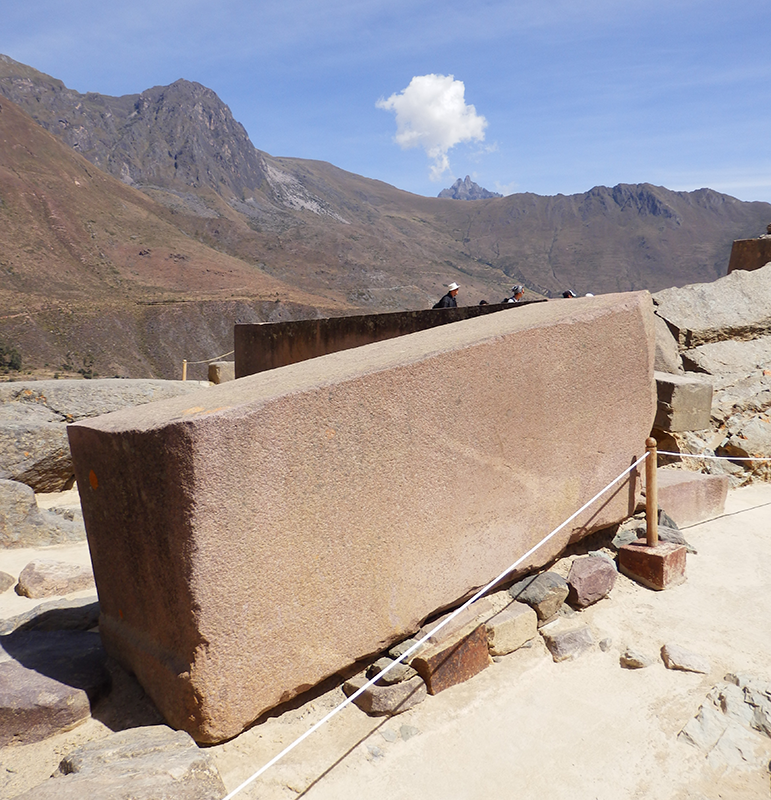
The massive stones used to build the Temple of the Sun astounded me. The mountaintop in the distance, past the ridge? That’s the quarry from where these stones were dug and dragged. There are still a couple of the stones in the valley that were being brought over when the war broke out.
There were several sundial-like features built so that the priests could determine the various changes of season, indicating when they should plant and harvest. Part of the cliff face takes on the appearance of a condor. Another, on the opposite side of the valley, looks like the silhouette of an Incan man.
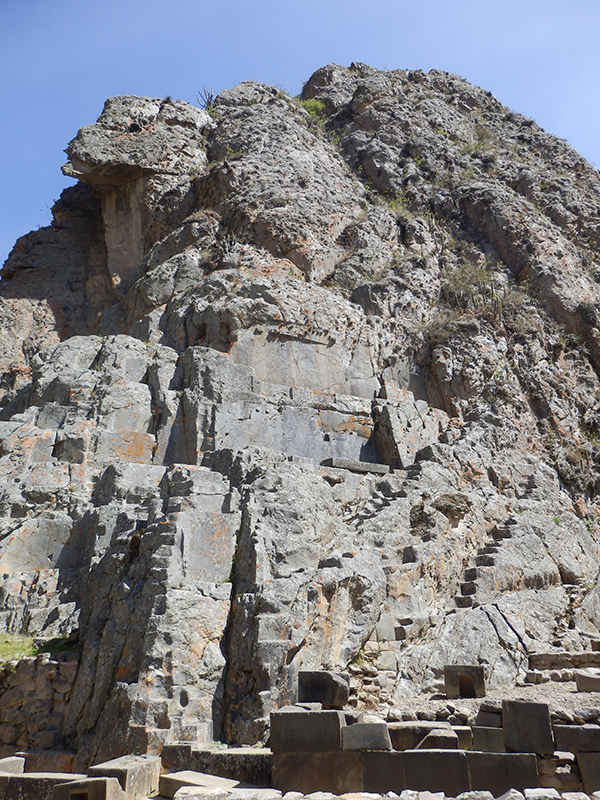
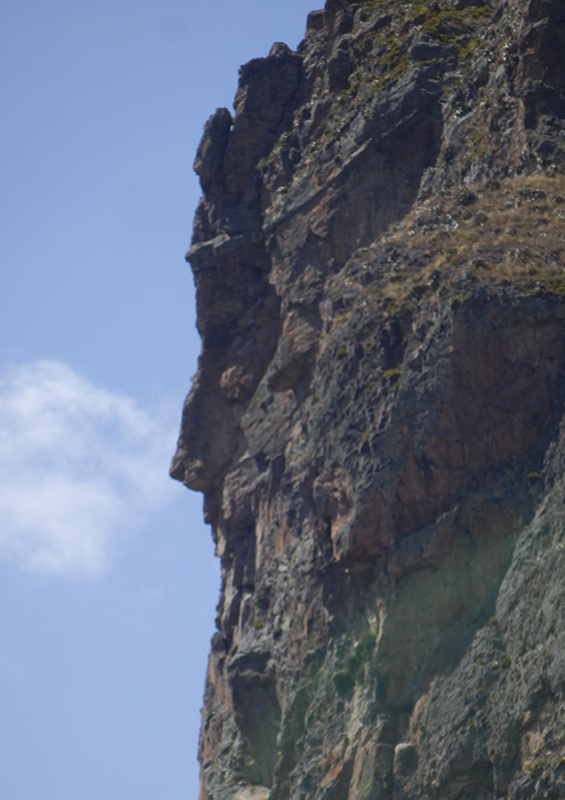
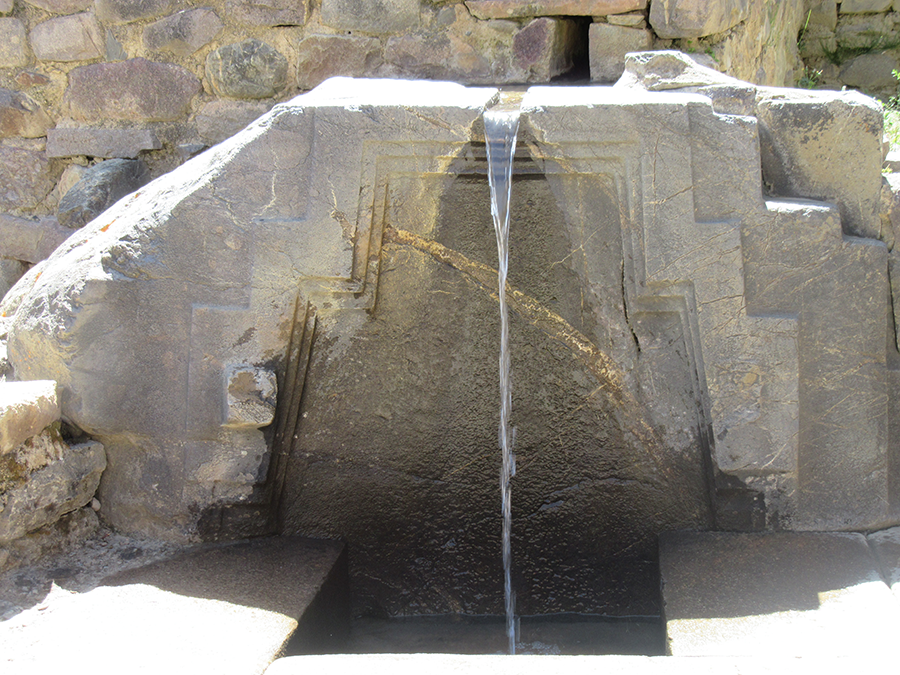
Though the Incan architecture is rather plain, the mountain views provided by the Andes are gorgeous, and the accomplishment of hauling those blocks up the mountains and putting them together so tightly you can’t put a piece of paper in the seams is astonishing.
We had a delicious dinner at a restaurant in the train station of Ollantaytambo, one of the top three meals of the trip, including a trio of alpaca steaks in different sauces – tender like a good pork roast but sweet like lamb. They also served hand-made pasta, and carried a variety of local beers from Sacred Valley Brewing Company. The station itself has an Old World charm about it, with trains passing buy on their way to and from Machu Picchu.
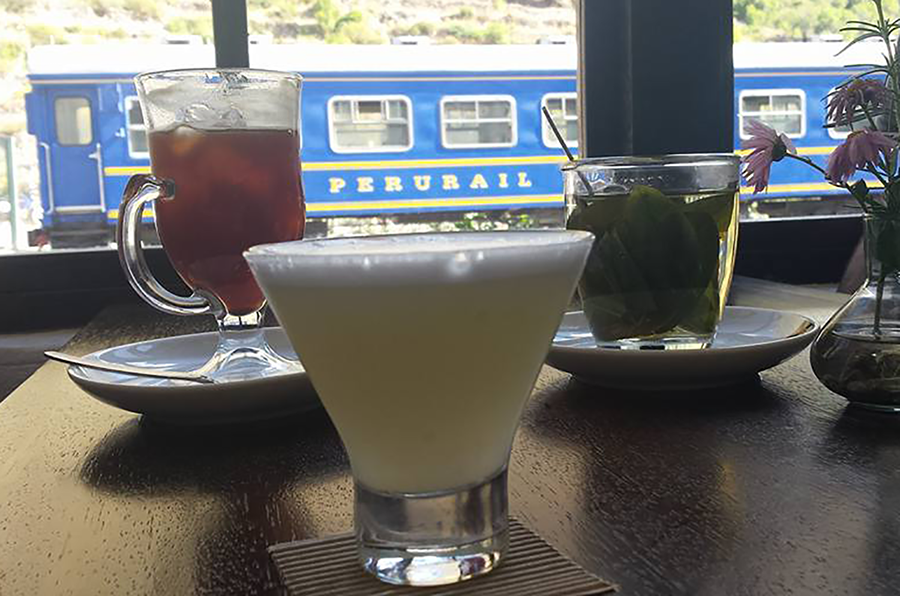
After a couple of nights in Ollantaytambo, we took that train ourselves. There are a couple of different classes of tickets, plus a very upscale train unto itself. We tried the two lower tier rides and the experience was grand both times. Inside, we could barely tell the difference between the two. It was all about the views.
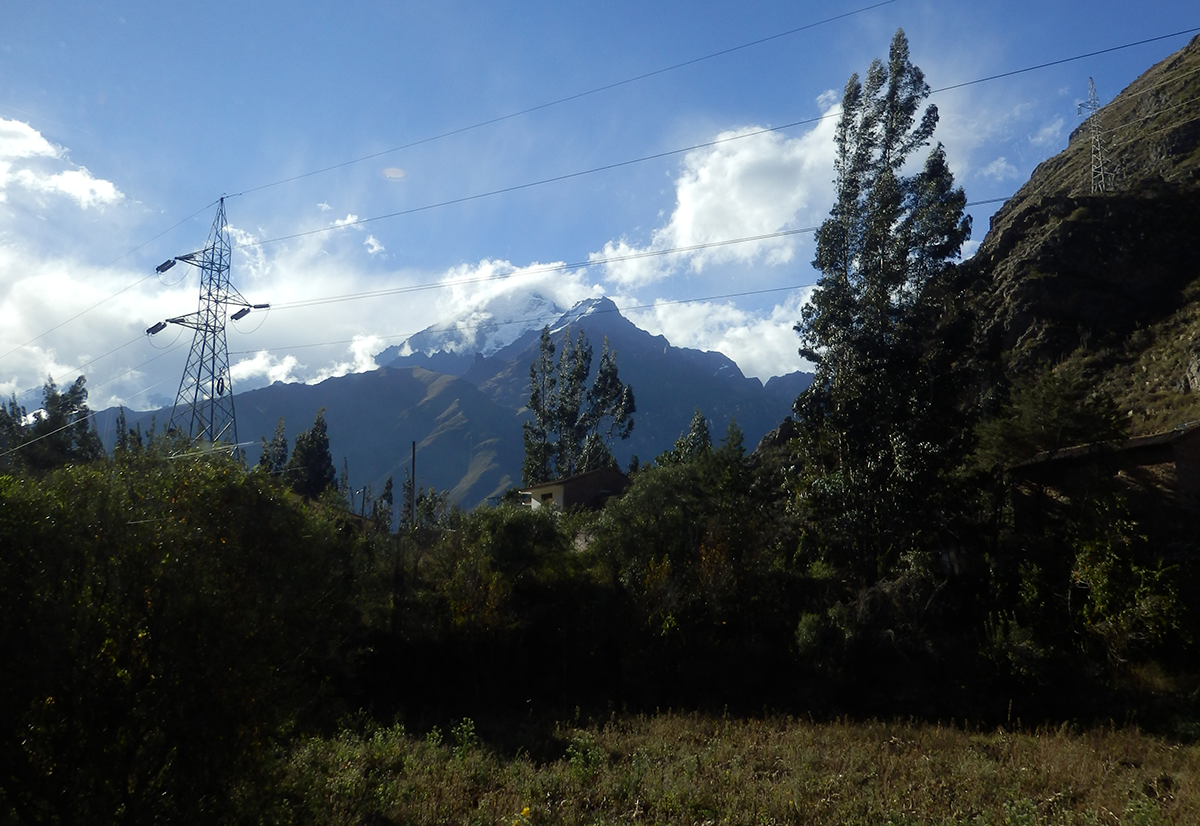
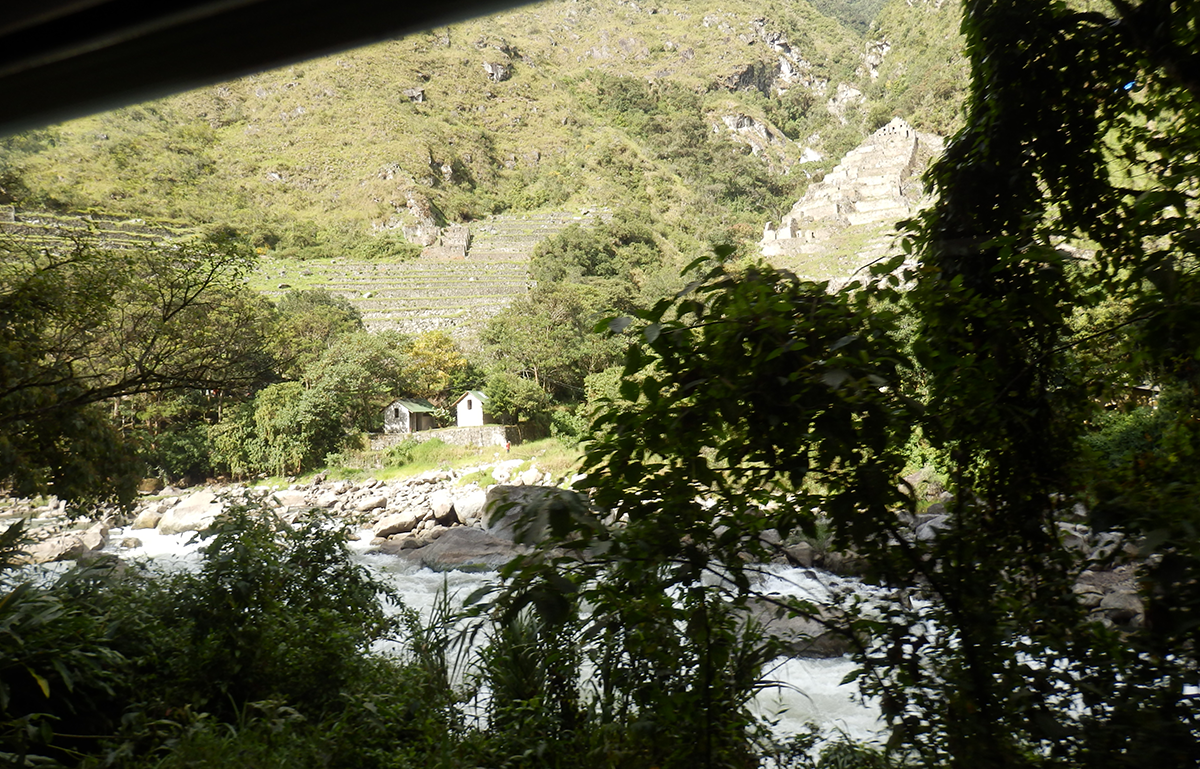
The route follows the Urubamba River, passing farmlands, a few villages, the occasional waterfall, and several ruins that you’ll only see closer if you’re on the epic, 4-day hike of the Incan Trail. Thanks to windows in the roof of the cars, you get to stare up at ice-covered mountaintops, watching clouds form and tumble down into the valley. The cacti of the comparatively arid highlands gradually give way to jungle as you descend.
Next, we roll into Machu Picchu del Pueblo, and then up the hill to the most famous Incan ruin.